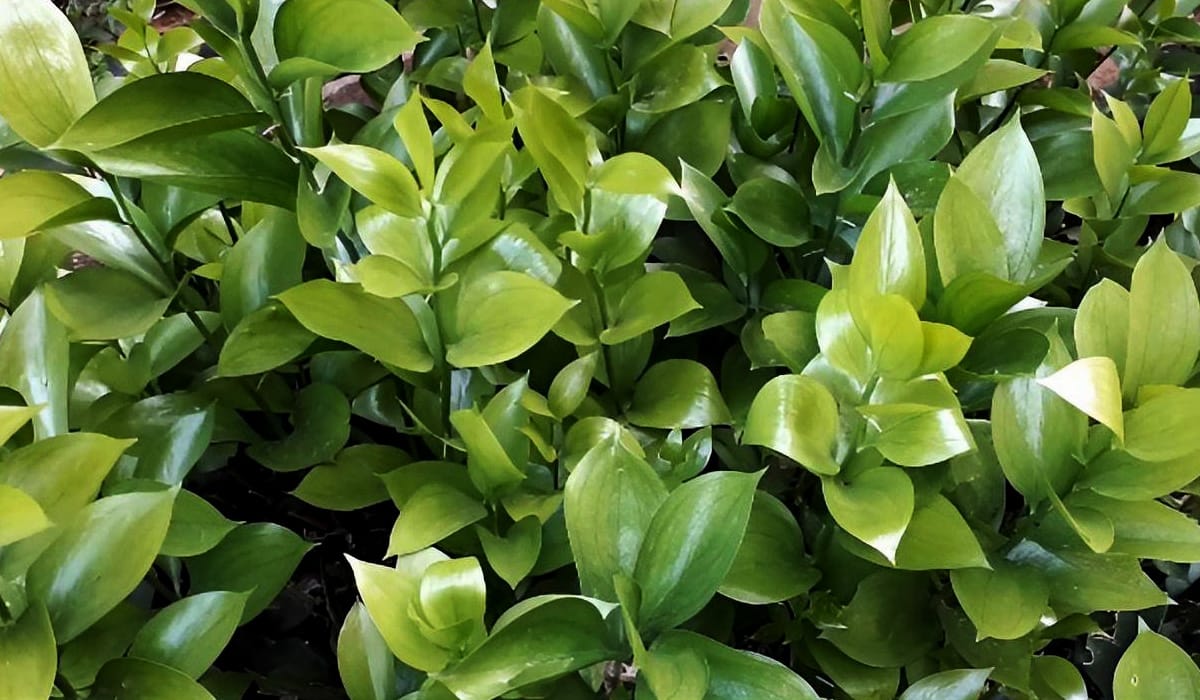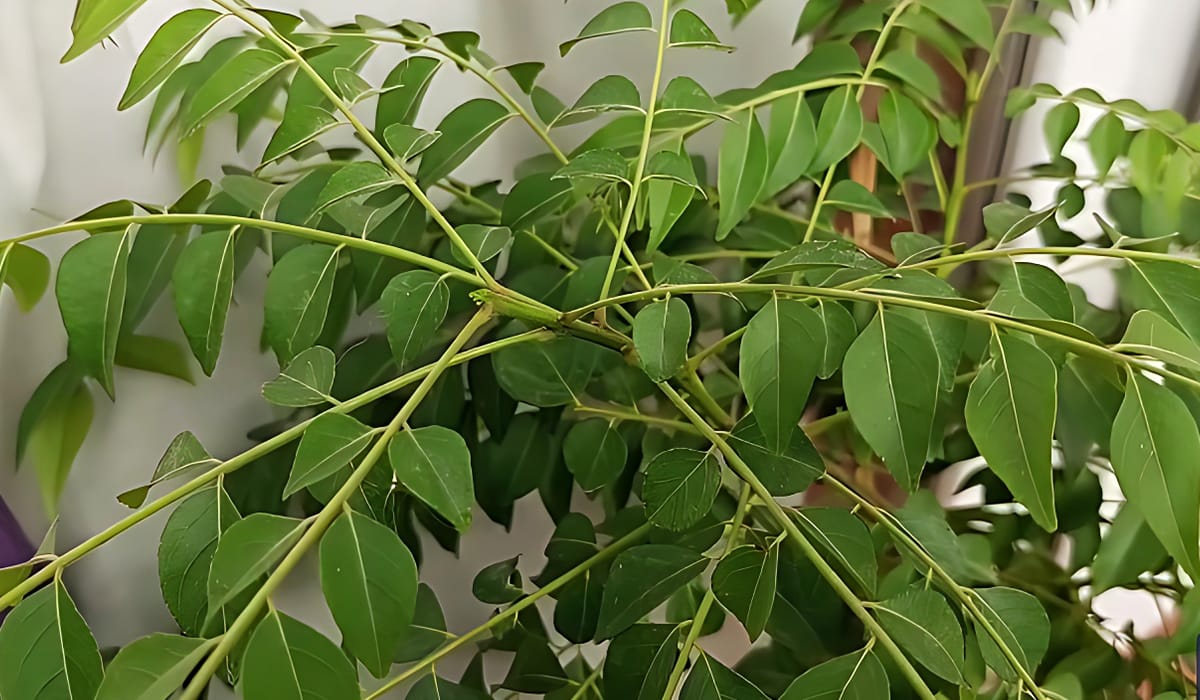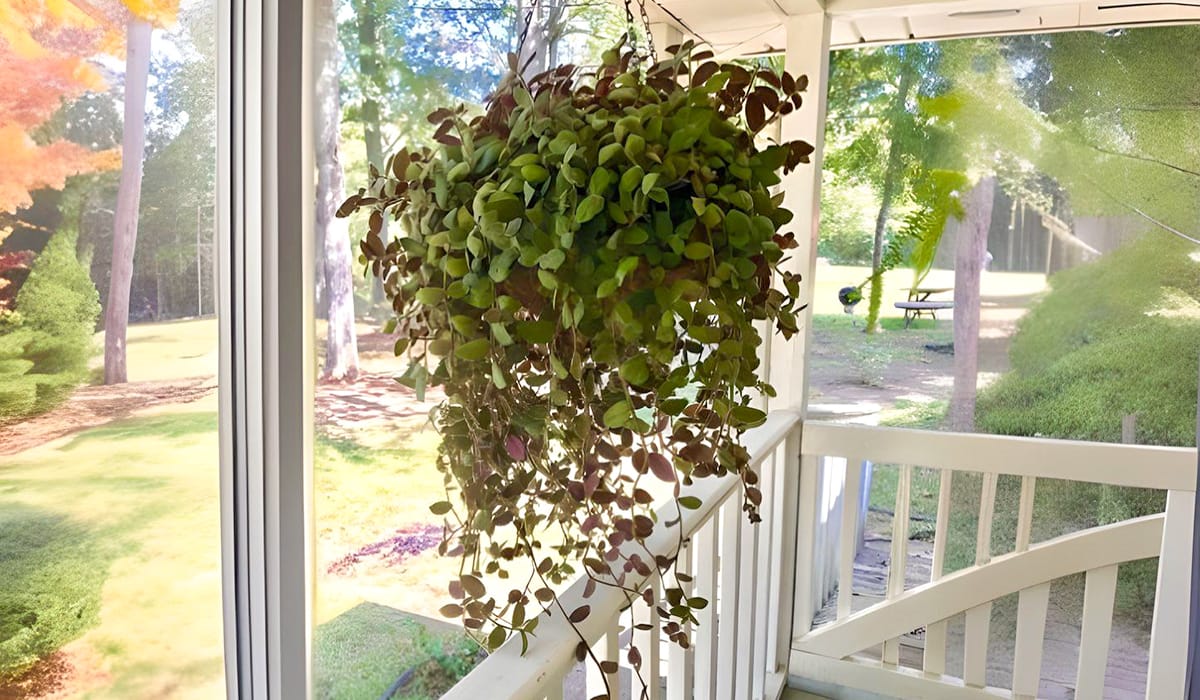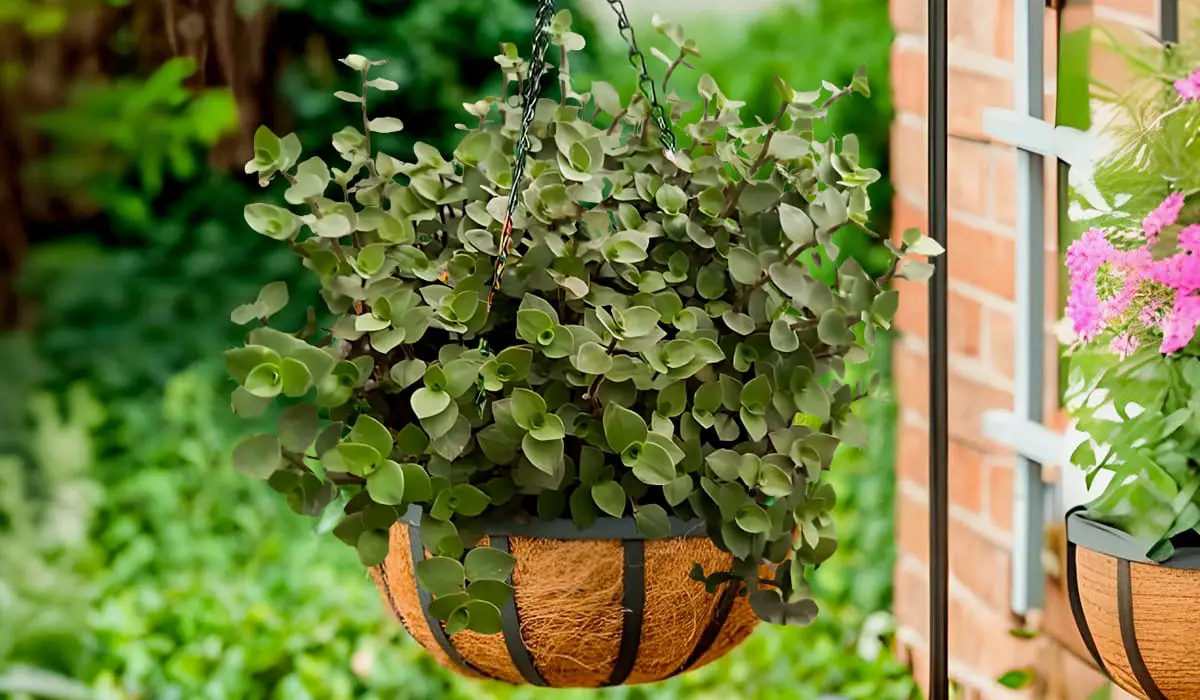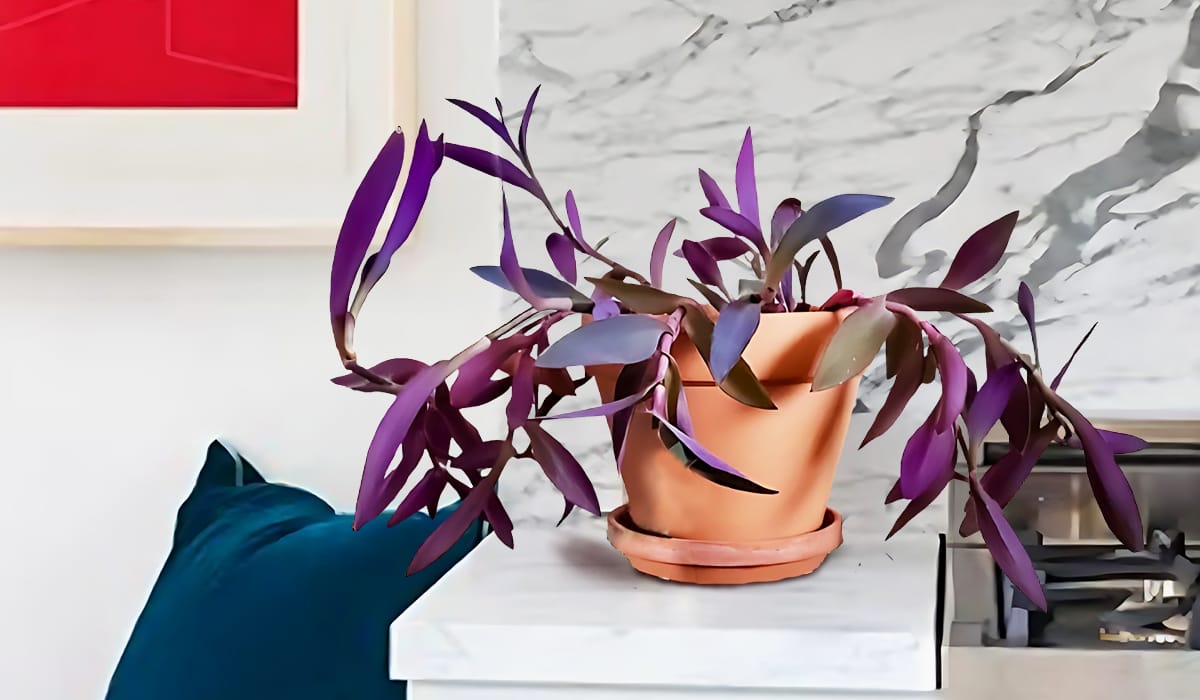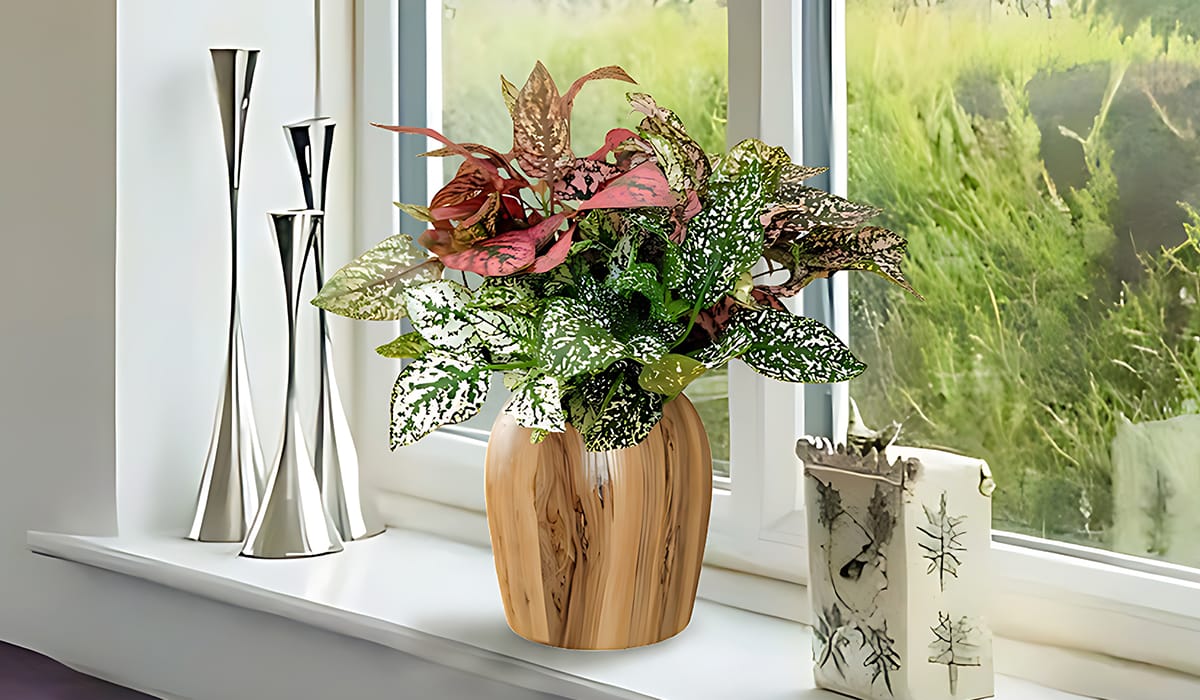
Polka-dot plants, with their vibrant and eye-catching foliage, have become popular among plant enthusiasts and interior decorators. The polka dot plant is a fantastic option if you want to add a touch of color and personality to your home.
We researched several books, blogs, and videos about the Polka dot plant, added our personal experiences, and then wrote this article. Suppose you read this entire article correctly. Then, you will get a complete idea of the cast iron plant. So, if you are a plant lover, we hope you enjoy this article. In this ultimate guide, we'll explore the inside and outside of caring for polka dot plants, propagation methods, joint problems, and the many benefits they bring to your living space.
| Common Name: | Polka Dot Plant |
| Botanical Name: | Hypoestes phyllostachya |
| Native Area: | Madagascar |
| Family: | Acanthaceae |
| Height: | 12 to 36 inches |
| Plant Type: | Perennial |
| Tolerate: | indirect light |
| Sun Exposure: | Bright |
| Soil Type: | Well-draining potting mix |
| Soil pH: | 6.0 to 7.0 |
| Toxicity: | Non-toxic to humans and pets |
| Hardiness Zones: | USDA 10-11 |
How to propagate Polka Dot Plant
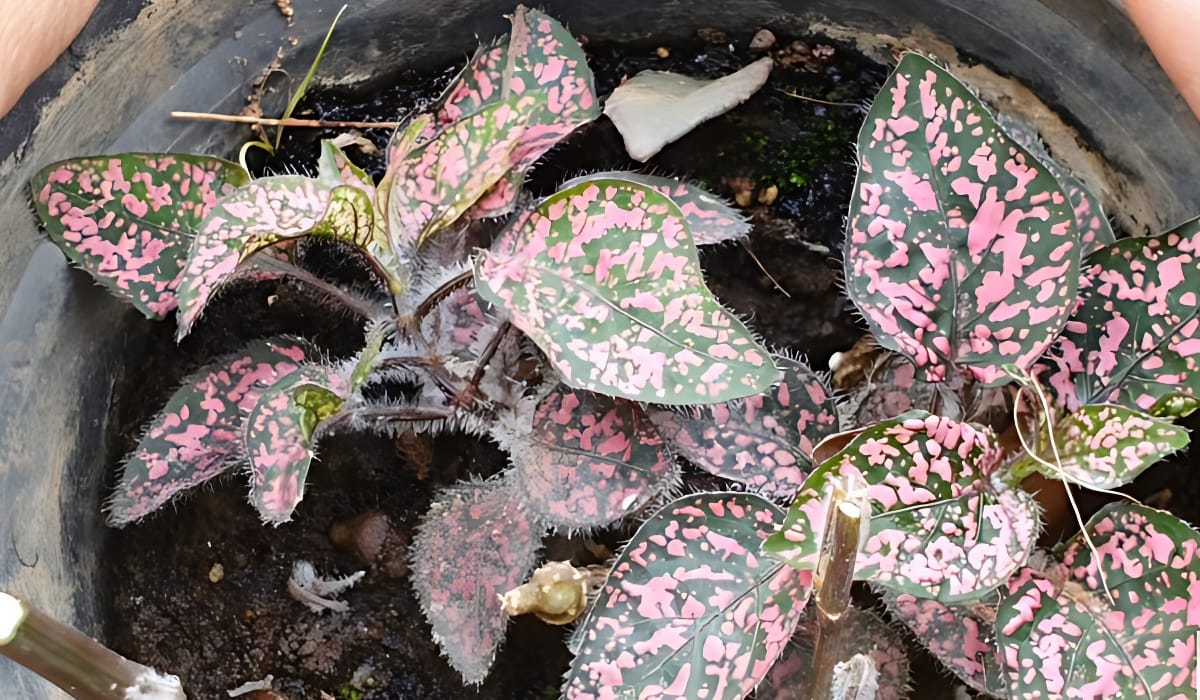
Propagating your Polka Dot Plant (Hypoestes phyllostachya) is rewarding and straightforward. Follow these easy steps to multiply your polka dot collection:
Materials Needed:
- Healthy and mature Polka Dot Plant
- Pruning shears or sharp scissors
- Small pots or containers
- Well-draining potting mix
- Watering can or mister
Steps:
- Prepare the Parent Plant: Water the parent plant a day or two before propagation to ensure it is well-hydrated, making it more resilient to cutting stress.
- Gather Your Tools: Use clean pruning shears or sharp scissors to make precise cuts. Dirty or dull tools can harm the plant.
- Identify Nodes for Cutting: Nodes are crucial points for root development. They are areas where leaves attach to the stem. Identify healthy nodes along the stem where you will make your cut.
- Take Cuttings: Make a clean cut just below a node using the pruning shears or scissors. Aim for 4-6 inches-long cuttings with a few leaves attached. Multiple cuttings can be taken from the same parent plant.
- Remove Lower Leaves: Trim or pinch off the lower leaves, leaving only a few leaves at the top of the cutting. This minimizes water loss and focuses energy on root development.
- Optional Rooting Hormone: While not mandatory, using a rooting hormone can stimulate faster root growth. Dip the cut end of the Polka Dot Plant cutting into the rooting hormone, following the product's instructions.
- Plant in Potting Mix: Fill small pots or containers with well-draining potting mix. Insert the cut end of the Polka Dot Plant cutting into the soil, ensuring it is securely planted.
- Water and Provide Humidity: Water the newly potted cutting thoroughly. Cover the cutting with a clear plastic bag to maintain high humidity, or place a plastic dome over the container.
- Place in Indirect Light: Position the potted cutting in a location with bright, indirect light. Avoid direct sunlight, as it can be too intense for young plants.
- Monitor and Care: Keep the soil consistently moist but not soggy. Mist the cutting regularly to maintain humidity. Monitor the cutting for signs of new growth, which indicates that roots are developing.
- Transplanting: Once the cutting has established a robust root system and shows signs of new growth (usually in a few weeks), it's ready to transplant into a larger pot or garden.
If you follow these detailed steps, you can successfully propagate your Polka Dot Plant and enjoy the satisfaction of growing new plants from the parent specimen. Remember to be patient and attentive to the needs of the cuttings during the propagation process.
How to Care Polka Dot Plants

Caring for Polka Dot Plants (Hypoestes phyllostachya) is relatively easy, and they make beautiful additions to indoor spaces. Here's a simple guide on how to care for Polka Dot Plants:
Light:
- Polka Dot Plants prefer bright, indirect light. They can tolerate some morning sunlight but should be protected from harsh afternoon sun, which can scorch their leaves.
- If you're growing them indoors, place them near a window with filtered sunlight or where they receive bright, indirect light.
Watering:
- Keep the soil consistently moist but not soggy. Water when the top inch of soil feels dry.
- Use a well-draining potting mix to prevent waterlogging, as excessively wet soil can lead to root rot.
Humidity:
- Polka Dot Plants thrive in high humidity. If you're growing them indoors, consider placing a humidifier nearby, especially in dry climates.
- Misting the leaves regularly can also help maintain a humid environment.
Temperature:
- They prefer temperatures between 65-75°F (18-24°C) and should be protected from drafts and sudden temperature changes.
- Avoid exposing them to temperatures below 50°F (10°C).
Fertilization:
- Feed your Polka Dot Plant with a balanced liquid fertilizer every 2-4 weeks during the growing season (spring and summer).
- Reduce or stop fertilizing during the fall and winter when the plant is in a period of dormancy.
Pruning:
- Pinch or prune the growing tips regularly to encourage bushier growth and prevent the plant from becoming leggy.
- You can also pinch off any leggy or discolored stems to maintain a more compact shape.
Repotting:
- Report your Polka Dot Plant when it outgrows its current container or becomes root-bound. This is typically done every 1-2 years.
- Use a well-draining potting mix and choose a pot slightly larger than the current one.
Pests:
- Keep an eye out for pests such as spider mites and aphids. If you notice any, treat them promptly with insecticidal soap or neem oil.
Following these basic care guidelines lets you enjoy healthy and vibrant Polka Dot Plants in your home or garden. Remember to observe your plant regularly and adjust care based on its specific needs and environment.
Polka Dot Plant Varieties
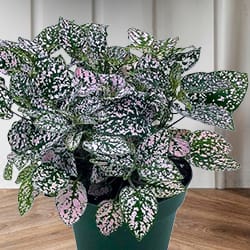
| Hypoestes phyllostachya Pink: |
| This variety features vibrant pink spots on a green background, creating a playful and eye-catching appearance. |
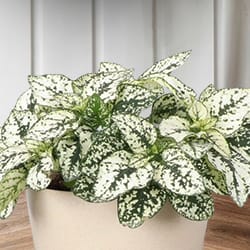
| Hypoestes phyllostachya White Splash: |
| The 'White Splash' cultivar has white spots on green leaves, providing a more subtle yet elegant look. |
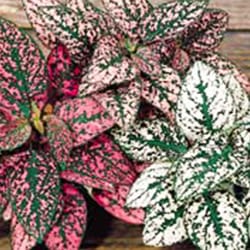
| Hypoestes phyllostachya Splash Select Mix: |
| This mix includes a variety of colors, such as pink, red, and white spots, creating a colorful and lively display in a single planting. |

| Hypoestes phyllostachya Confetti: |
| 'Confetti' is known for its compact growth habit and a mix of pink and green speckled leaves, resembling confetti scattered across the foliage. |
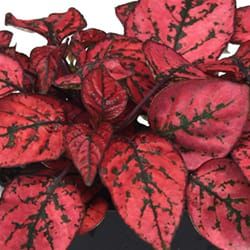
| Hypoestes phyllostachya Red: |
| Featuring red spots on green leaves, this cultivar adds a bold and striking element to your collection of Polka Dot Plants. |
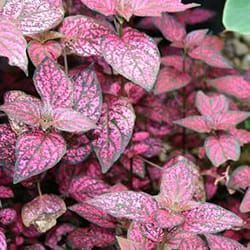
| Hypoestes phyllostachya Carmina: |
| 'Carmina' is recognized for its deep pink to red spots on green leaves, creating a visually appealing contrast. |
Polka Dot Plant Benefits
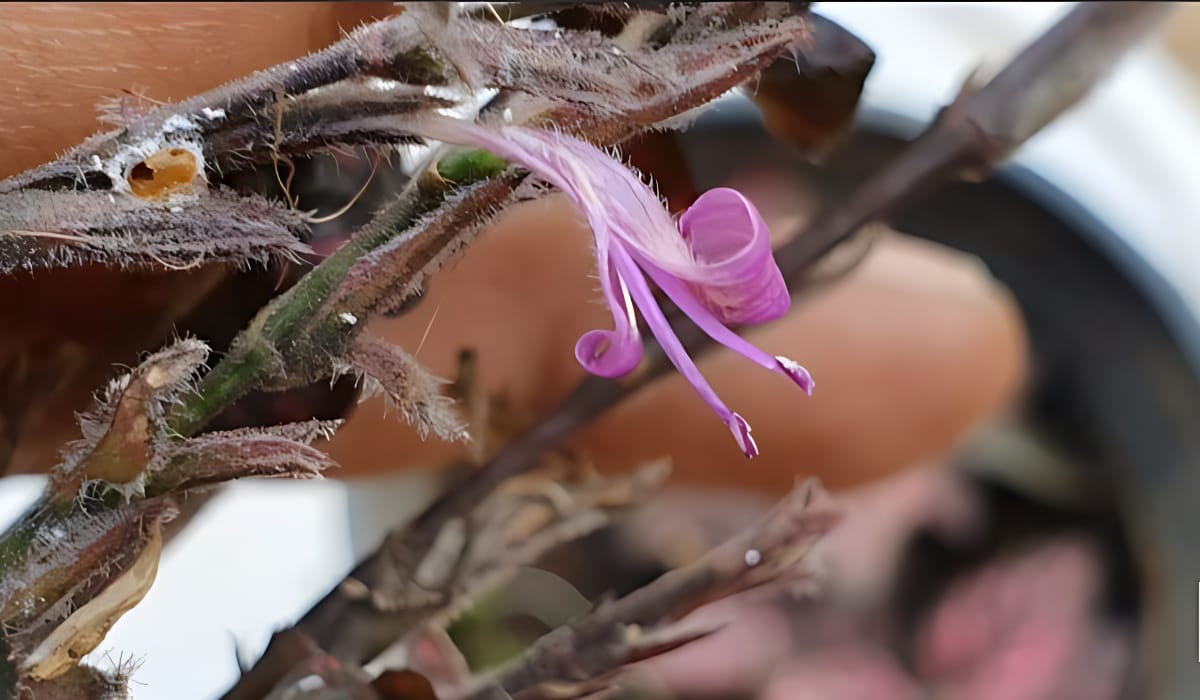
The Polka Dot Plant (Hypoestes phyllostachya) is not just a visually appealing houseplant but offers several benefits to those who choose to cultivate it. Here are some notable advantages of having a Polka Dot Plant in your indoor space:
- Aesthetically Pleasing: The primary appeal of the Polka Dot Plant lies in its attractive and distinctive foliage. Its leaves' vibrant colors and playful patterns add a touch of whimsy and charm to any room, making it a visually appealing decorative element.
- Indoor Air Purification: The Polka Dot Plant contributes to indoor air quality like many other houseplants. It helps filter out pollutants and toxins, promoting a healthier living environment. Plants generally absorb carbon dioxide and release oxygen during photosynthesis, improving air circulation.
- Stress Reduction: The act of caring for a living plant can have positive effects on mental well-being. Watering, pruning, and tending to the needs of the Polka Dot Plant provide a therapeutic and calming routine, reducing stress and promoting relaxation.
- Compact Size for Small Spaces: Polka Dot Plants have a bushy and compact growth habit, making them suitable for small living spaces or as tabletop decorations. Their manageable size allows for flexibility in placement, even in areas with limited space.
- Easy to Grow and Maintain: Polka Dot Plants are known for their relatively easy care requirements. They adapt well to indoor conditions, and with the right light, water, and soil, they can thrive without demanding excessive attention. This makes them an excellent choice for both beginner and experienced plant enthusiasts.
- Versatile Decor Element: Due to various cultivars with different colors and patterns, Polka Dot Plants can be incorporated into various interior design styles. They complement multiple color schemes and can be part of a cohesive decorative theme in homes or offices.
- Propagation and Gift-Giving: The Polka Dot Plant is easy to propagate through cuttings, allowing enthusiasts to share their love for these charming plants with friends and family. Propagated plants can make thoughtful and personal gifts.
- Educational Tool for Children: Growing and caring for a Polka Dot Plant can be a fun and educational experience, especially for children. It provides an opportunity to teach them about plant growth, biology, and the importance of taking care of living things.
While the Polka Dot Plant may not have the same air-purifying capabilities as some other common houseplants, its unique visual appeal, ease of care, and positive impact on mental well-being make it a valuable addition to indoor spaces.
Common Polka Dot Plant Problems And Solutions
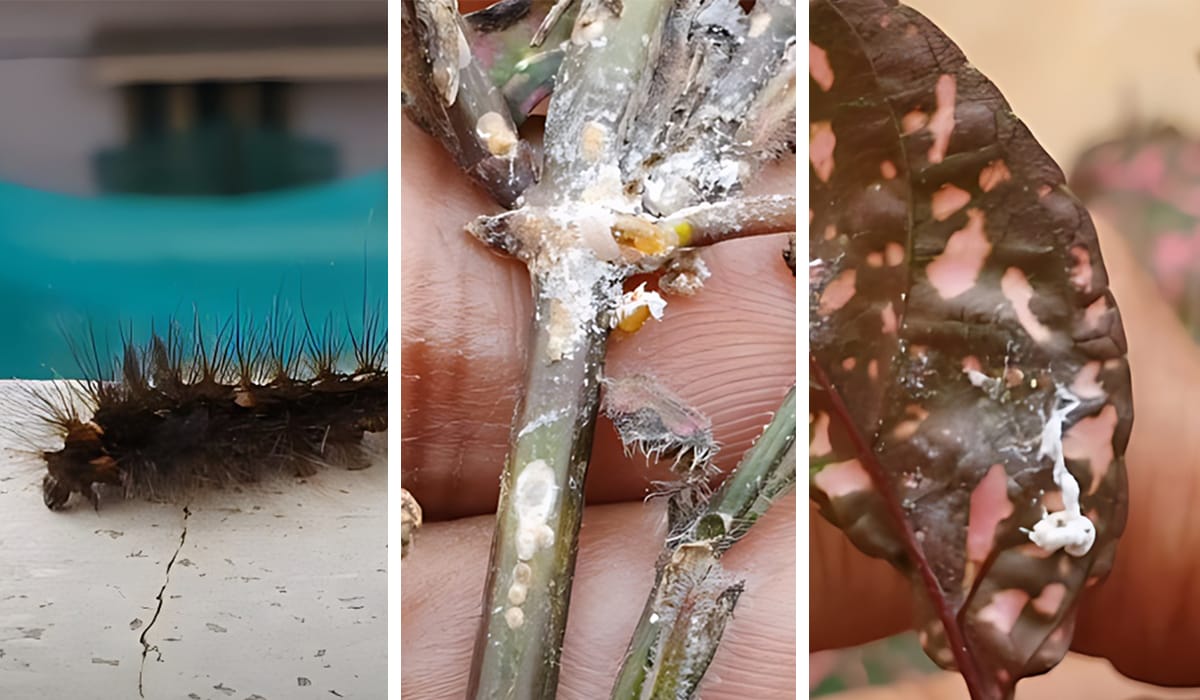
The Polka Dot Plant may encounter various issues. Here are some common problems and their solutions:
Leaf Dropping:
- Problem: If your Polka Dot Plant is dropping leaves, it may be a sign of overwatering. The roots may be sitting in water, leading to root rot.
- Solution: Allow the soil to dry out slightly between waterings. Ensure the pot has proper drainage, and empty the saucer if excess water accumulates.
Leggy Growth:
- Problem: Leggy growth, with elongated stems and sparse foliage, is often a result of insufficient light.
- Solution: Move the plant to a brighter location with indirect sunlight. Regularly rotate the pot to ensure even exposure to light on all sides.
Fading Colors:
- Problem: If the vibrant colors of the leaves are fading, it may indicate inadequate light conditions.
- Solution: Place the plant in a location with brighter, indirect light. Consider adjusting the placement to receive more sunlight during the day.
Yellowing Leaves:
- Problem: Yellowing leaves can be a sign of overwatering or poor drainage, causing root rot.
- Solution: Adjust your watering routine to prevent waterlogging. Ensure the pot has drainage holes, and use well-draining soil.
Pests - Spider Mites or Aphids:
- Problem: Polka Dot Plants can attract pests like spider mites or aphids, especially in dry conditions.
- Solution: Regularly inspect the plant for pests. If found, treat with insecticidal soap or neem oil. Increase humidity by misting the plant or placing a humidifier nearby.
Wilting:
- Problem: Wilting can be a sign of underwatering or root issues.
- Solution: Check the soil moisture regularly and water when the top inch feels dry. Ensure the pot has proper drainage, and inspect the roots for signs of rot.
Brown Leaf Edges:
- Problem: Brown edges on the leaves may indicate low humidity or inconsistent watering.
- Solution: Increase humidity by misting the plant regularly or placing a tray of water nearby. Maintain a consistent watering schedule, avoiding both overwatering and underwatering.
Fungal Diseases:
- Problem: Fungal diseases can occur in overly humid or poorly ventilated conditions.
- Solution: Ensure good air circulation around the plant. Avoid overwatering and provide adequate spacing between plants to reduce the risk of fungal infections.
Yellow Spots on Leaves:
- Problem: Yellow spots may be caused by various issues, including nutrient deficiencies or pests.
- Solution: Assess the overall health of the plant. If needed, provide a balanced liquid fertilizer during the growing season. Check for pests and treat accordingly.
Regularly monitoring your Polka Dot Plant, maintaining proper care practices, and addressing issues promptly can help keep your plant healthy and thriving. Adjusting the watering, light, and humidity levels as needed will contribute to the overall well-being of your Polka Dot Plant.
wrapping up
Polka dot plants are more than just decorative houseplants—they offer a delightful combination of beauty and benefits. Following proper care guidelines, experimenting with propagation methods, and addressing any issues, you can enjoy your home's unique charm of polka dot plants. So why wait? Add a polka dot plant to your collection and experience the joy they bring to your indoor oasis.
Consider expanding your indoor plant collection with other easy-to-care-for plants like
- Pink Chinese Evergreen
- Fiddle Leaf Fig Tree
- Monstera Albo
- Snow Queen Pothos
- Cousin It plant
- Snow White Waffle Plant
Each of these plants offers its unique charm and benefits.
Thanks for reading this article. if you have any questions must comment and contact our team. don't forget to share this article with your friends.

